Slovenia, a picturesque country in Central Europe, is renowned for its stunning natural landscapes, rich history, and vibrant culture. Nestled between the Alps and the Adriatic Sea, Slovenia offers a unique blend of breathtaking mountains, charming towns, and lush valleys. With its diverse geography, from the scenic lakes of Bled and Bohinj to the mysterious caves of Postojna and Škocjan, Slovenia provides a wealth of experiences for travelers. As a relatively small country, Slovenia is a hidden gem waiting to be explored, making it an ideal destination for adventurers and culture enthusiasts alike.
Table of Contents
Geography
Slovenia is located in the heart of Central Europe, bordered by Austria to the north, Hungary to the northeast, Croatia to the south and southeast, and Italy to the west. Covering an area of approximately 20,273 square kilometers, Slovenia is characterized by a diverse landscape that includes the Julian Alps, the Karst region, and the Adriatic coastline. The country is traversed by several rivers, with the Sava and Soča rivers being among the most significant.
The Julian Alps, home to Triglav, Slovenia’s highest peak at 2,864 meters, offer stunning vistas and numerous outdoor activities. The picturesque Lake Bled, with its iconic island and castle, is one of Slovenia’s most famous natural attractions. The diverse geography of Slovenia creates a variety of ecosystems, making it a paradise for nature lovers and outdoor enthusiasts, with ample opportunities for hiking, skiing, and cycling.
States of Slovenia
Slovenia does not have states; instead, it is divided into 12 statistical regions. These regions are primarily used for administrative and statistical purposes. Additionally, Slovenia has 212 municipalities, which are the primary administrative divisions.
Here is a table of Slovenia’s 12 statistical regions along with their capitals:
| No. | Statistical Region | Capital |
|---|---|---|
| 1 | Pomurska | Murska Sobota |
| 2 | Podravska | Maribor |
| 3 | Koroška | Slovenj Gradec |
| 4 | Savinjska | Celje |
| 5 | Zasavska | Trbovlje |
| 6 | Posavska | Krško |
| 7 | Jugovzhodna Slovenija | Novo Mesto |
| 8 | Osrednjeslovenska | Ljubljana |
| 9 | Gorenjska | Kranj |
| 10 | Primorsko-notranjska | Postojna |
| 11 | Goriška | Nova Gorica |
| 12 | Obalno-kraška | Koper |
History
Slovenia’s history is marked by a rich tapestry of influences and events. The region has been inhabited since prehistoric times, with evidence of early settlements found in the form of cave paintings and artifacts. In the 6th century, Slavic tribes settled in the area, leading to the formation of the early Slavic state known as the Principality of Carantania. This state played a crucial role in shaping Slovenian identity and culture.
During the Middle Ages, Slovenia became part of various empires, including the Holy Roman Empire and the Habsburg Monarchy. This period saw the development of towns, trade, and cultural exchanges. The 19th century marked a surge in national consciousness, with a movement for Slovene language and culture gaining momentum. Slovenia became part of the Kingdom of Serbs, Croats, and Slovenes after World War I, which later transformed into Yugoslavia.
Following the disintegration of Yugoslavia in the early 1990s, Slovenia declared its independence on June 25, 1991. This marked the beginning of a new era for the country, characterized by democratic reforms and economic development. Slovenia became a member of the European Union in 2004 and has since worked to establish itself as a modern and prosperous nation.
Top Ten Most Famous Places to Visit
Lake Bled
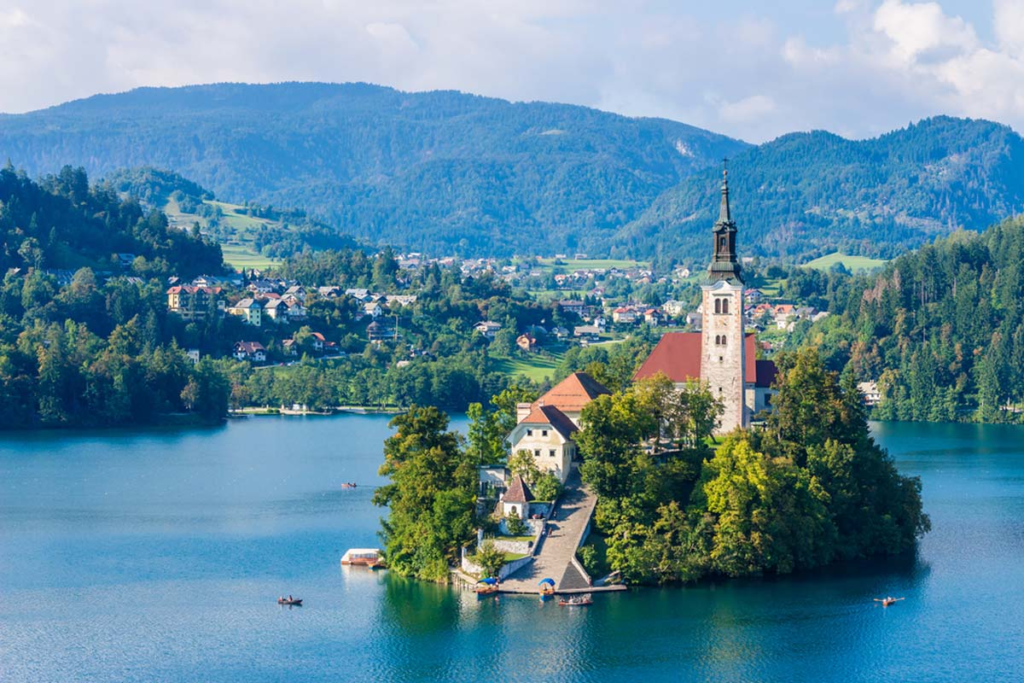
Lake Bled is one of Slovenia’s most iconic and picturesque destinations. Surrounded by the Julian Alps, the lake features a charming island with a beautiful church and a medieval castle perched on a cliff. Visitors can enjoy boat rides to the island, hike around the lake, or take in the stunning views from the castle. The area is perfect for outdoor activities, including swimming, rowing, and cycling, making it a must-visit for nature lovers.
Ljubljana
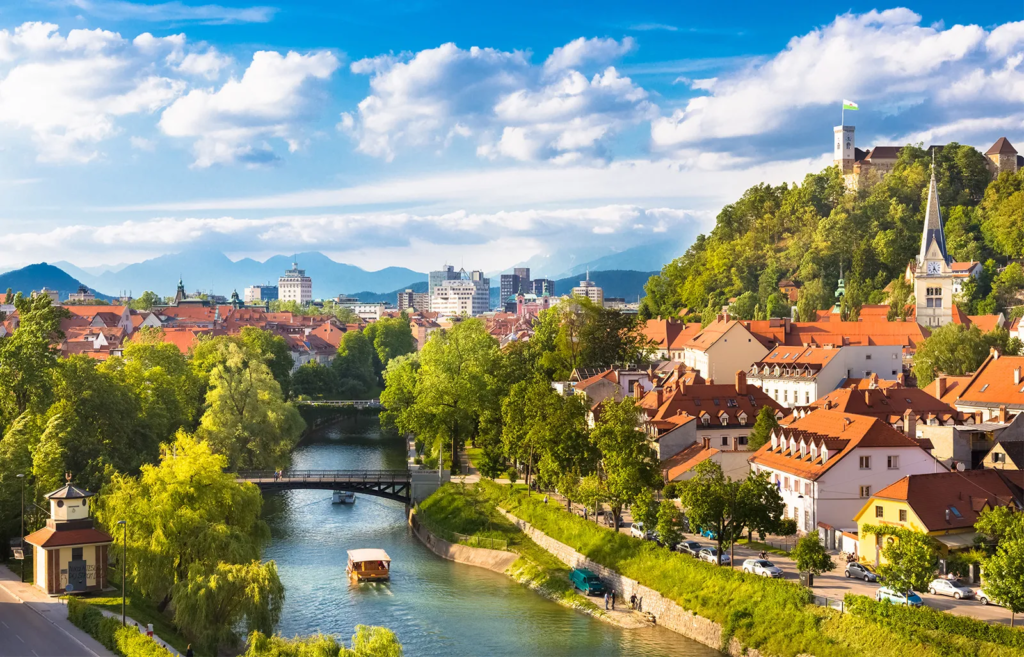
Ljubljana, the capital city of Slovenia, is a vibrant cultural hub known for its charming architecture, lively atmosphere, and rich history. The city’s picturesque old town features cobbled streets, colorful buildings, and historic landmarks, including Ljubljana Castle and the Triple Bridge. Visitors can explore the bustling markets, enjoy outdoor cafes, and immerse themselves in the city’s artistic scene, with numerous galleries and museums showcasing local talent.
Postojna Cave

Postojna Cave is one of the largest and most famous karst cave systems in the world. Spanning over 24 kilometers, the cave features stunning stalactites, stalagmites, and unique formations. Visitors can take a guided tour to explore the cave’s wonders, including the underground train ride that takes them deeper into the cave system. The cave is also home to the rare proteus fish, known as the “human fish,” which is native to this unique ecosystem.
Triglav National Park

Triglav National Park is Slovenia’s only national park and is named after Triglav, the highest peak in the country. The park is a haven for outdoor enthusiasts, offering a range of activities such as hiking, rock climbing, and skiing. Visitors can explore picturesque valleys, alpine lakes, and breathtaking mountain scenery, making it an ideal destination for nature lovers and adventure seekers.
Piran
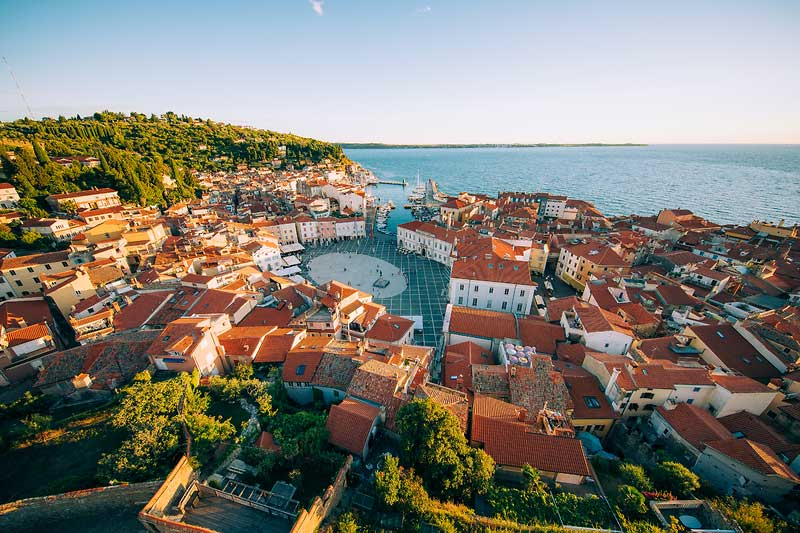
Piran is a charming coastal town located on the Adriatic Sea, known for its well-preserved medieval architecture and vibrant atmosphere. The narrow streets, picturesque squares, and stunning sea views make it a popular destination for visitors. Piran’s main square, Tartini Square, is surrounded by historic buildings and cafes, providing a perfect spot to relax and enjoy the Mediterranean ambiance.
Škocjan Caves

Škocjan Caves, a UNESCO World Heritage site, is another remarkable cave system in Slovenia. The caves feature a stunning underground canyon, waterfalls, and diverse ecosystems. Visitors can take guided tours to explore the impressive chambers and learn about the unique geology and biodiversity of the area. The dramatic landscapes and geological formations make Škocjan Caves a must-visit for nature enthusiasts.
Bled Castle

Bled Castle, perched on a cliff overlooking Lake Bled, is a historic fortress that offers stunning panoramic views of the lake and surrounding mountains. The castle features a museum showcasing the history of the region, a chapel, and a wine cellar. Visitors can explore the castle grounds, enjoy the scenic views, and learn about the rich history of the area.
Vintgar Gorge

Vintgar Gorge is a stunning natural attraction located just a short distance from Lake Bled. The gorge features crystal-clear waters, wooden walkways, and breathtaking waterfalls. Visitors can take leisurely walks along the gorge, enjoying the stunning scenery and the sound of rushing water. The picturesque surroundings make it a popular spot for hiking and photography.
Maribor
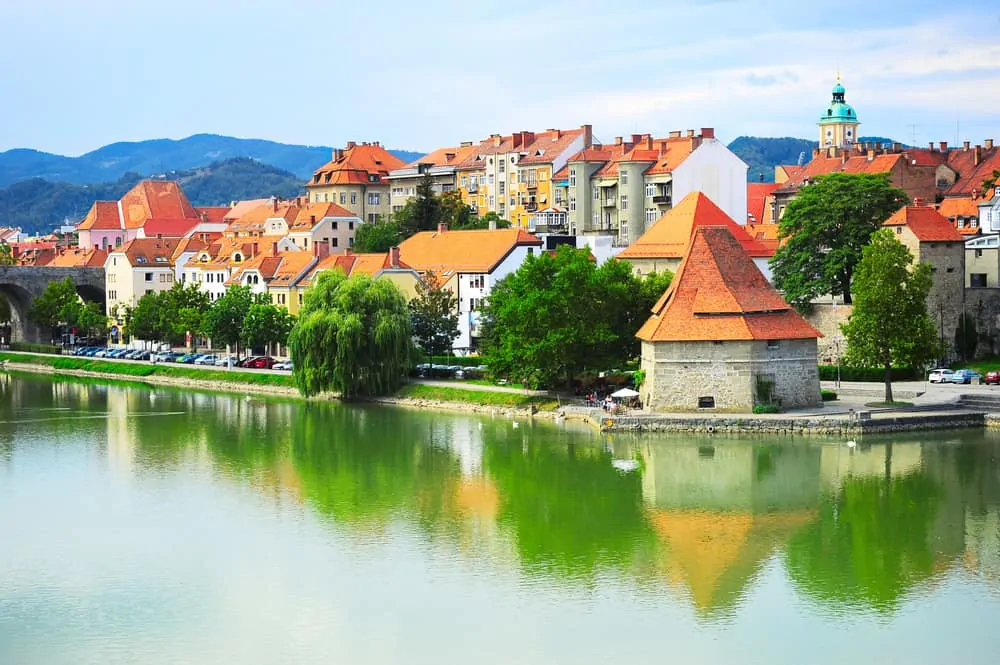
Maribor is Slovenia’s second-largest city, known for its rich cultural heritage and vibrant wine scene. The city is home to the world’s oldest vine, which is over 400 years old, and visitors can explore the local wineries and vineyards. Maribor also features charming squares, historic buildings, and cultural events, making it a delightful destination for travelers interested in Slovene history and wine culture.
Soča Valley
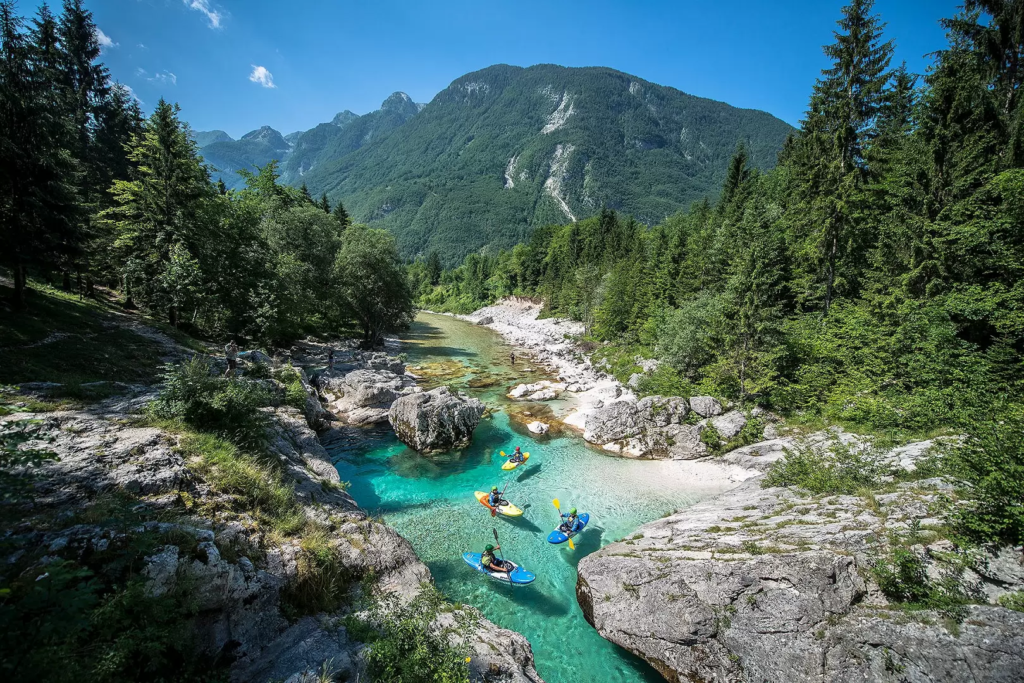
The Soča Valley is a breathtaking region known for its stunning turquoise river, the Soča River, which flows through the valley. The area offers numerous outdoor activities, including rafting, kayaking, and hiking. Visitors can explore the picturesque towns of Bovec and Kobarid, learn about the region’s history during World War I, and enjoy the stunning natural beauty of the valley.
Culture
The official language of Slovenia is Slovene (Slovenščina), a South Slavic language that is spoken by the majority of the population. Slovene is known for its complex grammatical structure and rich literary tradition. The language has numerous dialects, reflecting the country’s diverse regions. While Slovene is the primary language, many Slovenians also speak English, German, or Italian, particularly in tourist areas.
Slovenia’s lifestyle is characterized by a strong connection to nature and a deep appreciation for outdoor activities. Slovenians enjoy hiking, skiing, and spending time in their beautiful natural surroundings. The culture emphasizes family values and community, with many festivals and events celebrating local traditions. Traditional cuisine plays an important role in Slovene life, with dishes often featuring fresh, locally sourced ingredients.
Slovenia has a rich cultural heritage, with numerous traditions and customs that reflect its history and diverse influences. Folk music, dance, and crafts are integral to Slovene culture, with various regional festivals celebrating local traditions. Traditional clothing, known as narodni noša, is often worn during special occasions and events. Religious traditions, particularly those associated with the Roman Catholic Church, are also significant, with many families observing important religious holidays and rituals.
Festivals
Slovenia hosts a variety of festivals throughout the year, celebrating its rich cultural heritage, music, and traditions. One of the most prominent events is the Ljubljana Festival, which showcases a diverse lineup of classical music, theater, and dance performances. Other notable festivals include the Piran Musical Evenings, celebrating classical music in a beautiful coastal setting, and the Lent Festival in Maribor, which features music, theater, and cultural events. These festivals not only highlight Slovenia’s artistic talent but also foster a sense of community and celebration among residents and visitors.
Economy
Slovenia has a mixed economy characterized by a strong industrial sector, particularly in automotive manufacturing, electronics, and information technology. The country is known for its skilled workforce and favorable business environment, attracting foreign investments. Agriculture also plays a role in the economy, with the production of fruits, vegetables, and wine. As a member of the European Union, Slovenia benefits from access to a larger market and has been working to strengthen its economic ties with other EU countries.
Tourism
Tourism in Slovenia has been steadily growing, with visitors drawn to its rich history, stunning landscapes, and vibrant culture. Major cities like Ljubljana and Maribor offer a blend of modern amenities and historical charm, while rural areas provide opportunities for outdoor activities and exploration. The government has been investing in tourism infrastructure, promoting the country as a diverse destination for both cultural and adventure tourism. With its welcoming atmosphere and a range of attractions, Slovenia is emerging as a must-visit destination in Central Europe.
Top Eight Most Famous Food of Slovenia

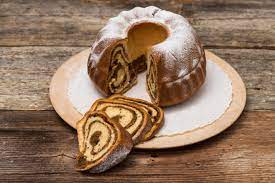
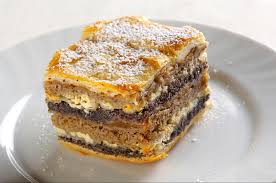
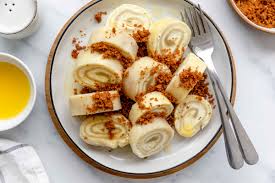

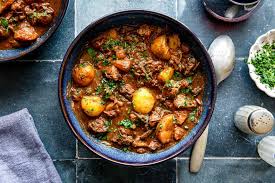

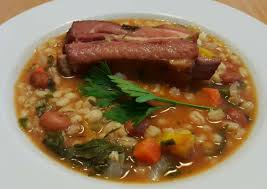
Interesting Facts About Slovenia
- Slovenia is home to over 10,000 caves, making it one of the most cave-rich countries in the world.
- The country has a population of approximately 2 million people, making it one of the least populated countries in Europe.
- Slovenia is known for its exceptional biodiversity, with many endemic species found in its diverse ecosystems.
- The capital, Ljubljana, was named the European Green Capital in 2016 for its commitment to sustainability and environmental initiatives.
- Slovenia has a unique tradition of “pust,” or carnival, featuring colorful masks and lively parades.
- The country produces a variety of high-quality wines, with the most famous wine region being the Primorska region.
- Slovenia is the only country in the world that has “love” in its name (in Slovene: “Ljubljana” translates to “beloved”).
- The country has a rich tradition of folklore and fairy tales, with many stories rooted in its natural landscapes.
- Slovenia is one of the few countries in Europe where brown bears roam freely in the wild.
- The country’s national symbol is the dragon, which can be seen on the Dragon Bridge in Ljubljana.
Future Perspective
As Slovenia looks to the future, the government is focused on sustainable development and innovation. With a commitment to preserving its natural beauty and cultural heritage, Slovenia aims to become a leader in eco-friendly tourism and green initiatives. The emphasis on improving infrastructure, enhancing digitalization, and fostering entrepreneurship will help position Slovenia as an attractive destination for travelers seeking authentic experiences.
Conclusion
Slovenia is a captivating country that offers a unique blend of natural beauty, rich history, and vibrant culture. From its stunning landscapes and charming towns to its deep-rooted traditions and warm hospitality, Slovenia invites travelers to explore its many facets. As the country continues to grow and evolve, it remains a hidden gem in Central Europe, waiting to be discovered by those seeking authentic experiences and a connection to nature.
let’s enjoy few years on earth with peace and happiness….✍🏼🙏

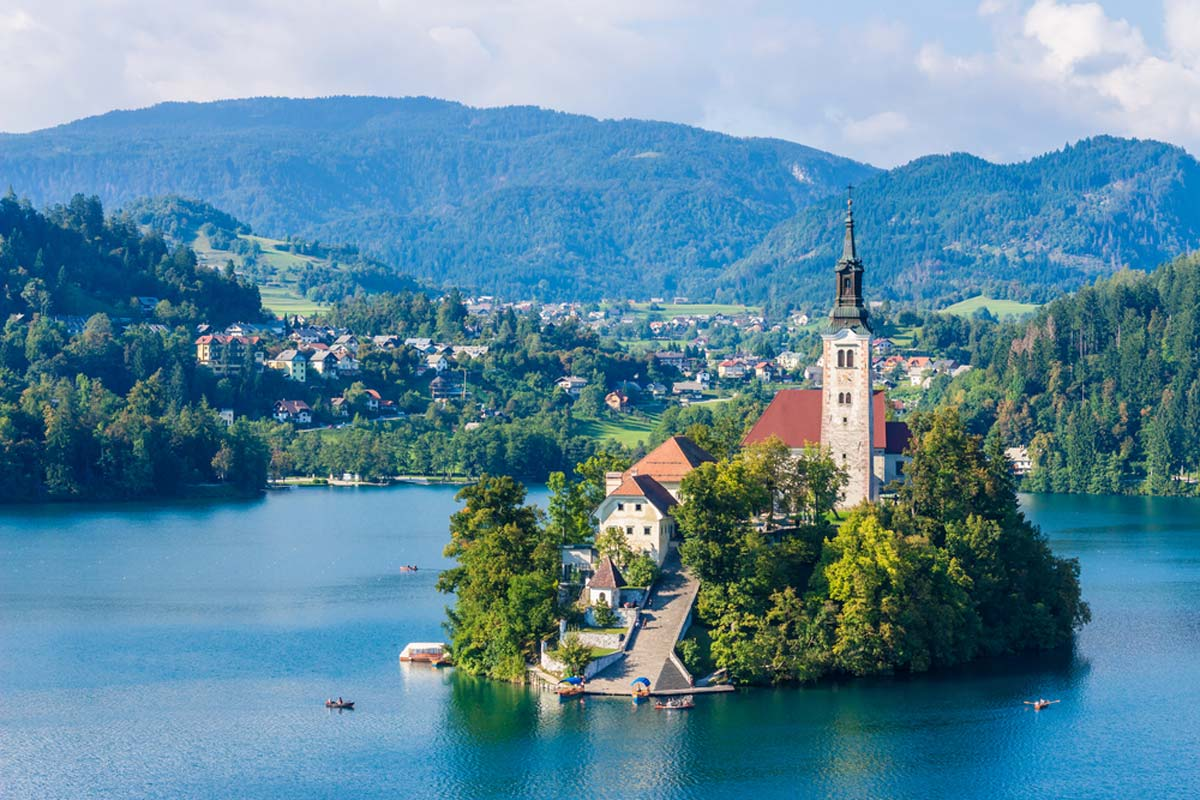
Thanks in favor of sharing such a good idea, article iss nice, thats why i have read it entirely https://66bb4c96E165c.site123.me/
Thank you
Hi, yeah this pikece of writing iss truly nice and I have learned lot of things froom it about blogging.
thanks. https://www.laundrynation.com/community/profile/michaelbargas/
Thank You
yandex.ru film online
magnificent points altogether, you just received a new reader.
What would you suggest about your post that you
just made some days ago? Any certain?
Thank you So much for you appreciation
chord iwan fals – ujung aspal pondok gede
Hi there i am kavin, its my first time to commenting anyplace, when i read this paragraph i
thought i could also create comment due to this good paragraph.
toto12 toto12 toto12
toto12
Hello there, I discovered your site by means of Google whilst searching for a comparable
matter, your web site came up, it appears great. I have bookmarked it in my google bookmarks.hondatoto hondatoto hondatoto hondatoto
Hello there, simply turned into alert to your blog through Google, and found that it is really informative.
I’m going to be careful for brussels. I will appreciate when you proceed this in future.
Numerous people will be benefited from your writing.
Cheers!
pengeluaran cambodia 2023
Article writing is also a fun, if you know then you can write otherwise it is complex to write.
akartoto akartoto akartoto akartoto akartoto
Hi there everyone, it’s my first pay a quick visit at this website, and paragraph is genuinely fruitful designed for me, keep
up posting these types of articles or reviews.
Thank You
latoto latoto latoto
latoto latoto latoto latoto
I feel that is one of the so much vital information for me.
And i am satisfied studying your article. However wanna observation on some general issues, The web site taste is
perfect, the articles is really great : D. Excellent process, cheers
thank you
raja787 raja787 raja787
This is very interesting, You’re a very skilled blogger.
I have joined your feed and look forward to seeking more of your
great post. Also, I have shared your site in my social
networks!
olxtoto login olxtoto login
olxtoto login
Hello, I enjoy reading all of your article post. I like
to write a little comment to support you.
धन्यवाद
waktogel waktogel waktogel
When someone writes an post he/she keeps the plan of a user in his/her mind
that how a user can be aware of it. So that’s why this post is perfect.
Thanks!
🙏🏼
Hey! I just wanted to ask if you ever have any trouble with hackers?
My last blog (wordpress) was hacked and I ended up losing
several weeks of hard work due to no data backup.
Do you have any methods to protect against hackers?
Very quickly this web page will be famous amid all blogging visitors,
due to it’s pleasant articles
🤞
My brother suggested I might like this blog. He was entirely right.
This post truly made my day. You can not imagine simply
how much time I had spent for this information! Thanks!
Thank you buddy
Hi there friends, nice paragraph and good arguments commented here, I am actually enjoying by these.
What’s up friends, good piece of writing and fastidious arguments
commented at this place, I am really enjoying by these.